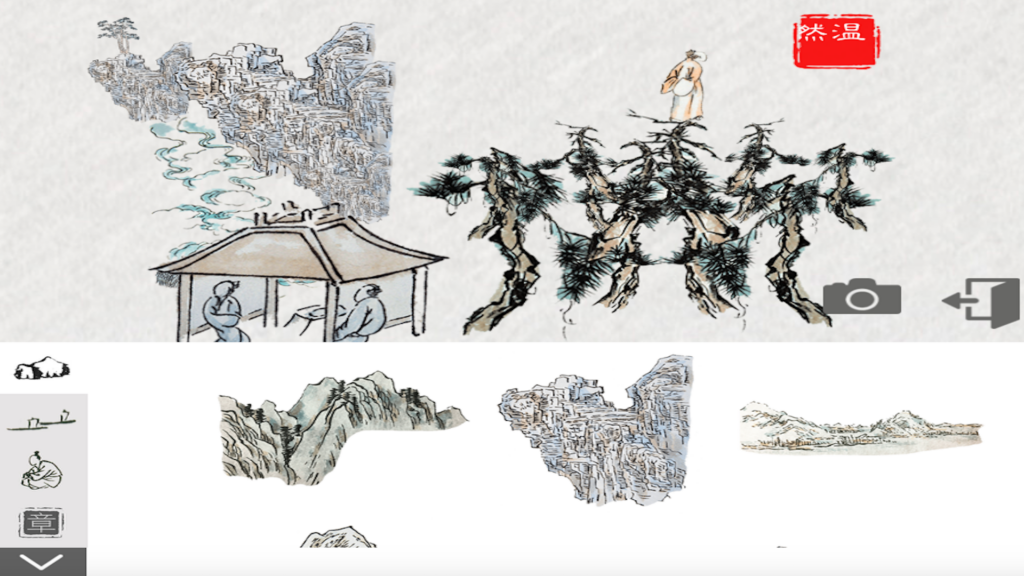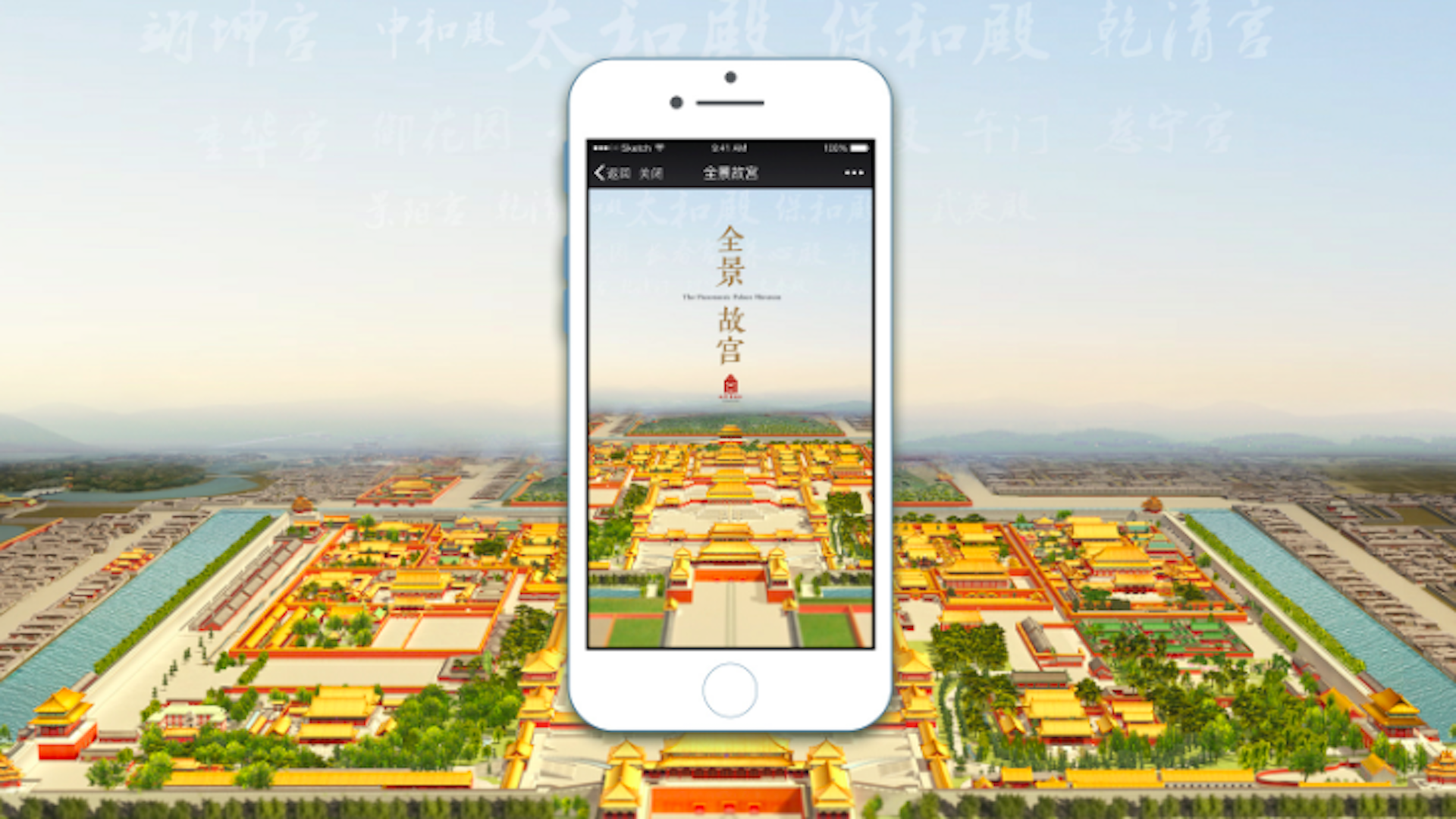On a crisp afternoon in Beijing, you decide to explore the Forbidden City. A bright winter sun hangs in the sky, casting the golden roofs and white marble terraces of China’s dynastic home into sharp relief. Your map steers you towards The Hall of Supreme Harmony and, as the Palace Museum’s audio guide describes your imperial surroundings, you decide to share this cultural moment with your friends on WeChat. This may feel like a typical museum visit, but the experience has been entirely virtual.
“The Panoramic Palace Museum” program, which is accessible through WeChat, a downloadable App, and computer, was launched in 2017 and exemplifies a broader push by Chinese cultural institutions to digitize their collections. Conceived to promote and explore the museum’s vast collection, it stands as effective platform for a tech-driven contemporary Chinese audience. But now, with museums closed and public gatherings restricted due to the coronavirus outbreak, such innovations have become valuable resources allowing institutions to reach a housebound citizenry whose primary connection to the outside world is the smartphone.
Browsing art may seem of secondary importance in a prolonged period of crisis, but offering comfort and escape to the Chinese people through culture was one focus of an emergency meeting held by the National Cultural Heritage Administration (NCHA) in late January. With government officials having strongly encouraged museums to “promote new technology and inheritance of our country’s cultural heritage”, here are three ways Chinese institutions are responding during this trying period.
Online Exhibitions
From Karamay Museum in far western Xinjiang province to Shanghai’s Museum of Revolutionary History, 100 Chinese institutions have responded promptly to NCHA’s directive by making their publicly available through online exhibitions using a centralized portal. Originally developed by Tencent, the site has a back catalogue dating to 2015 and though webpage’s slogan “See Exhibitions Without Leaving the House” might seem euphemistic, the level and depth of experiences on offer is impressive.
The two main templates used by museums are virtual tours and itemized photographic exhibitions. Virtual tours offer a click-walk through of museums, users can read museum labels and zoom in on artifacts to better understand, for example, the history of wresting and competitive fishing at Zhengzhou’s Chinese Sports Heritage Exhibition.

Palace Museum offers three virtual tours of China’s Imperial home. Image: Sina.com.cn
The other, photographic exhibitions, while not as immersive as the virtual tour, frequently provide objects in 3D, allowing visitors the chance to turn and inspect treasured objects on their screens such as Neolithic pottery at Shaanxi History Museum or an East Han jade screen at Hebei Provincial Museum.
Beyond state-run cultural institutions, a host of independent arts institutions have responded proactively to the situation. One strong example is M Woods Museum, a Beijing-based contemporary art institution. Though geographically located in the city’s 798 art hub, the institution has long held a strong online presence and has launched an experimental online exhibition “Art Is Still Here: A Hypothetical Show for a Closed Museum”. In remaining “virtually open”, M Woods has created an interactive pin board for users to play with. In the coming weeks it plans to offer “accompanying artworks presented online through the museum’s online platforms”.
To date, more than 700,000 people have browsed NCHA’s catalogue of online exhibitions and while western museums and cultural institutions cannot upload their content on this platform, they should prioritize making their collections and ongoing exhibitions digitally available to Chinese audiences.

Beiijng’s M Woods has created an interactive exhibition and will feature changing artworks over the coming months. Image: mwoods.org
Online Games
The Lunar New Year period already represents the peak in annual online gaming, but the government’s decision to extend the holiday beamed this trend to a new level. The iOS app store saw a 27.5 percent year-on-year increase in downloads and the Douyu Streaming Index showed leading names such as Honor of Kings and League of Legends more than doubled viewership from 2019.
Chinese cultural institutions have followed suit by releasing educational games and interactive digital artworks. One leader is Suzhou Museum which promoted four mini games through its WeChat and Weibo accounts. The digital engagements reflect the museum’s status as a home of traditional Chinese painting. They include a game in which users must assemble Ming style furniture and the digitization of a 16th century scroll by Qiu Ying that pans slowly and reveals the accompanying poem line-by-line.

Suzhou Museum is promoting online games including “DIY Landscape Painting”, which allows users to create classical paintings digitally. Image: szmuseum.com/温然
Most immersive, however, is “DIY Landscape Painting”. Scroll painting devotees can create digital masterpieces by arranging classic motifs such as sweeping rivers, rudimentary huts, and circling herons before signing off with a personalized red seal and sending it to a friend.
Mobile-friendly and accessible through connecting QR codes, these mini games may lack the finesse and complexity of major online games, but they are a playful means of reintroducing collections to audiences.
Membership Refunds
With Chinese cultural centers shuttered for the foreseeable future, institutions have been swift and forthcoming in compensating visitors. The likes of Palace Museum and Shanghai Power Station of Art have announced full ticket refunds for bookings made over the coronavirus period and UCCA and M Woods have extended their membership programs until the current situation is resolved.
Western cultural institutions should follow suit by offering unconditional refunds to both Chinese tour operators and individual travelers. Aside from being the morally upstanding decision, “this kind of action can create a lot of goodwill with Chinese partners in the long term,” says Dragon Trail’s Sienna Parulis-Cook.
Conclusions
Although the extent and duration of coronavirus remains unknown, the need for international cultural destinations to devise a digital strategy is clear. Simply suspending outreach is not a viable medium-term option, rather institutions should look to China’s example in this moment of uncertainty and find new means of engagement whether through online exhibitions, uploading lectures, or creating mini games and interactions.
This need not encompass a radical overhaul, but rather a honing of existing tactics, “We’re shifting our content from newer, site-specific special exhibition awareness to general museum content that allows our followers to virtually visit the museum,” Carly McCloskey, MoMA’s Assistant Director, Tourism Sales and Marketing said via email, “We’re planning historical exhibition information and lots of audio programming to help people stay connected, informed, and entertained.”



